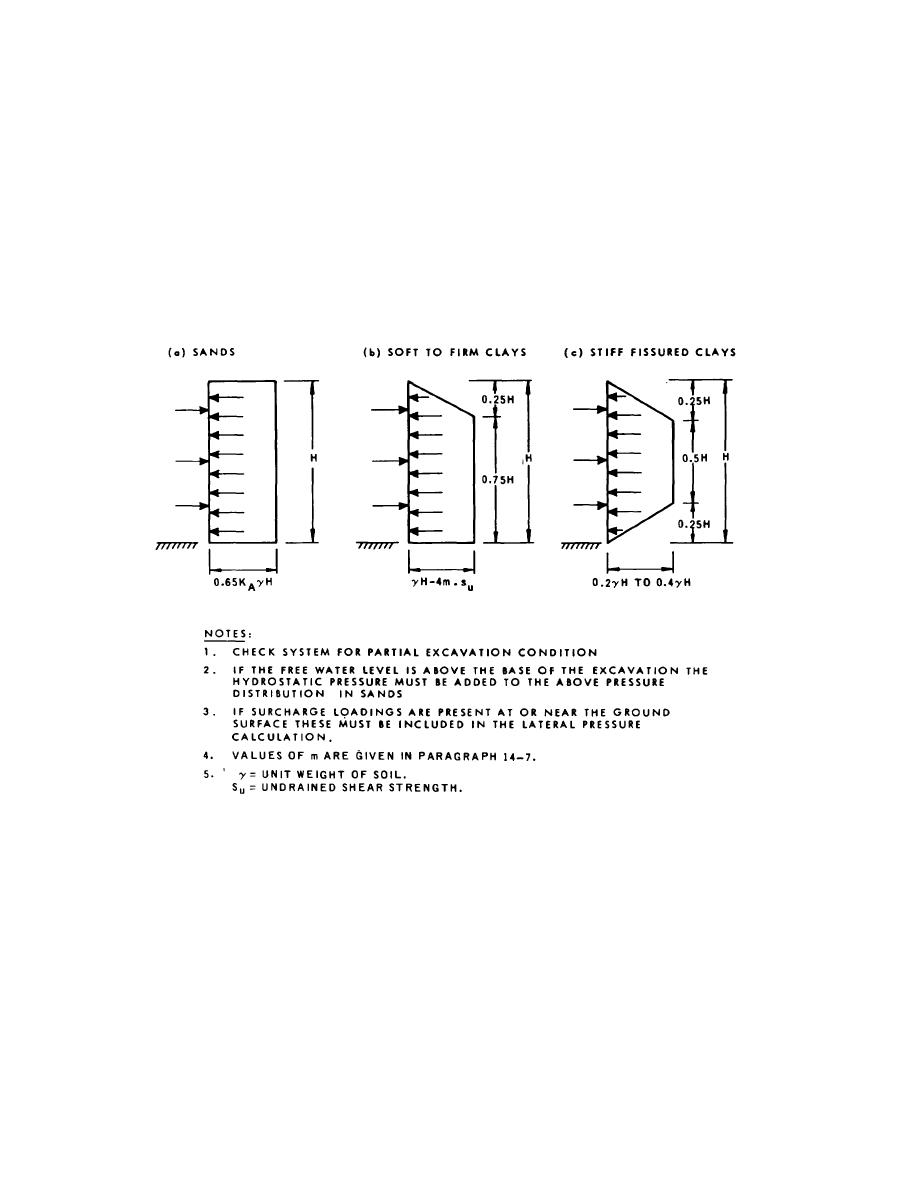
TM 5-818-1 / AFM 88-3, Chap. 7
unrelieved hydrostatic pressures in a permeable layer
14-8.
Stability of bottom of excavation.
located below the clay.
a. Piping in sand. The base of an excavation
c. Care of seepage.
Small amounts of
in sand is usually stable unless an unbalanced
seepage into the excavation can be controlled by
hydrostatic head creates a "quick" condition. Among the
pumping from sumps. Such seepage can be expected if
methods to eliminate instability are dewatering,
the excavation extends below the water table into
application of a surcharge load at the bottom of the
permeable soils. If the soils consist of fine sands and
excavation, and deeper penetration of the piling.
silts, the sumps should be routinely monitored for
b. Heaving in clays. The stability against
evidence of fines being washed from the soil by
heave of the bottom of an excavation in soft clay may be
seepage. If large quantities of fine-grained materials are
evaluated from figure 14-12. If the factor of safety is less
found in the sumps, precautionary steps should be taken
than 1.5, the piling should be extended below the base of
to make the lagging or sheeting watertight to avoid
the excavation. Heave may also occur because of
excessive settlements adjacent to the excavation.
U. S. Army Corps of Engineers
Figure 14-11. Pressure distribution-complete excavation.
14-17



 Previous Page
Previous Page
